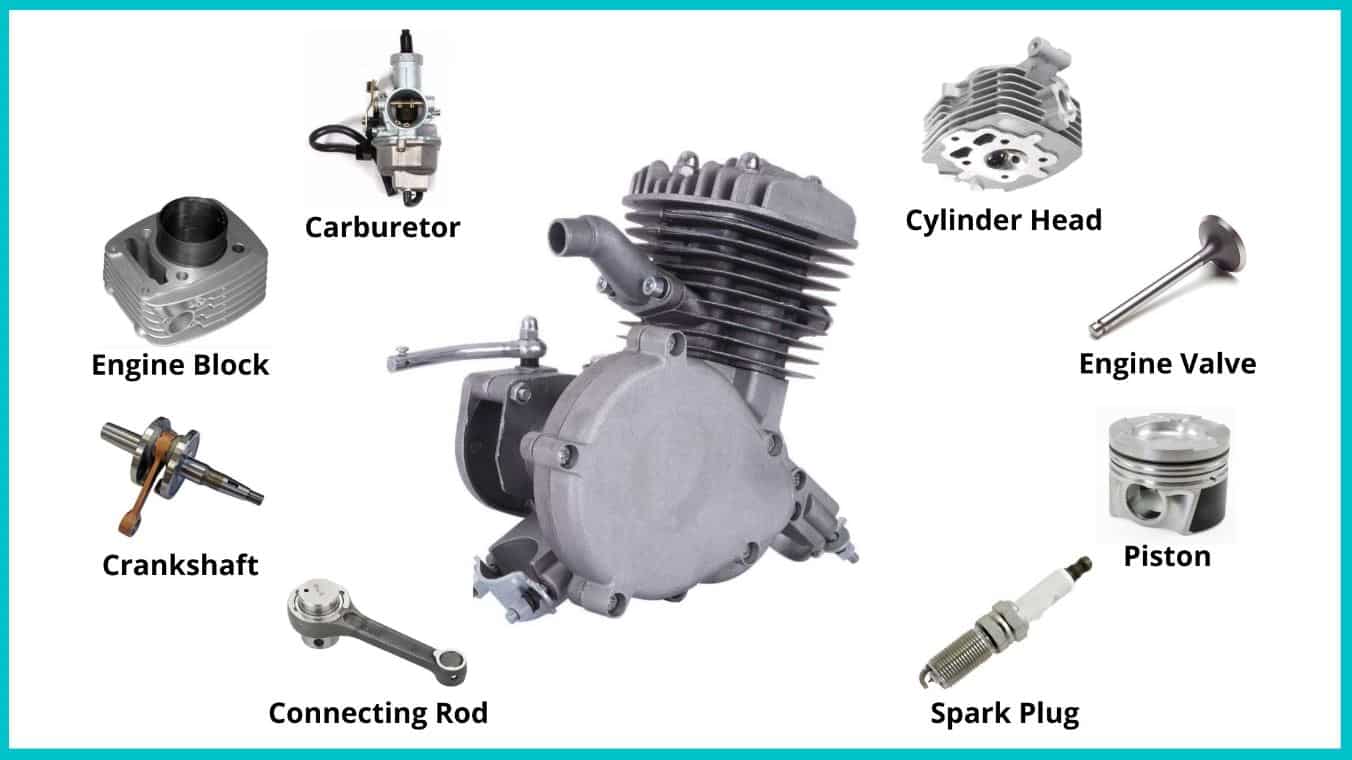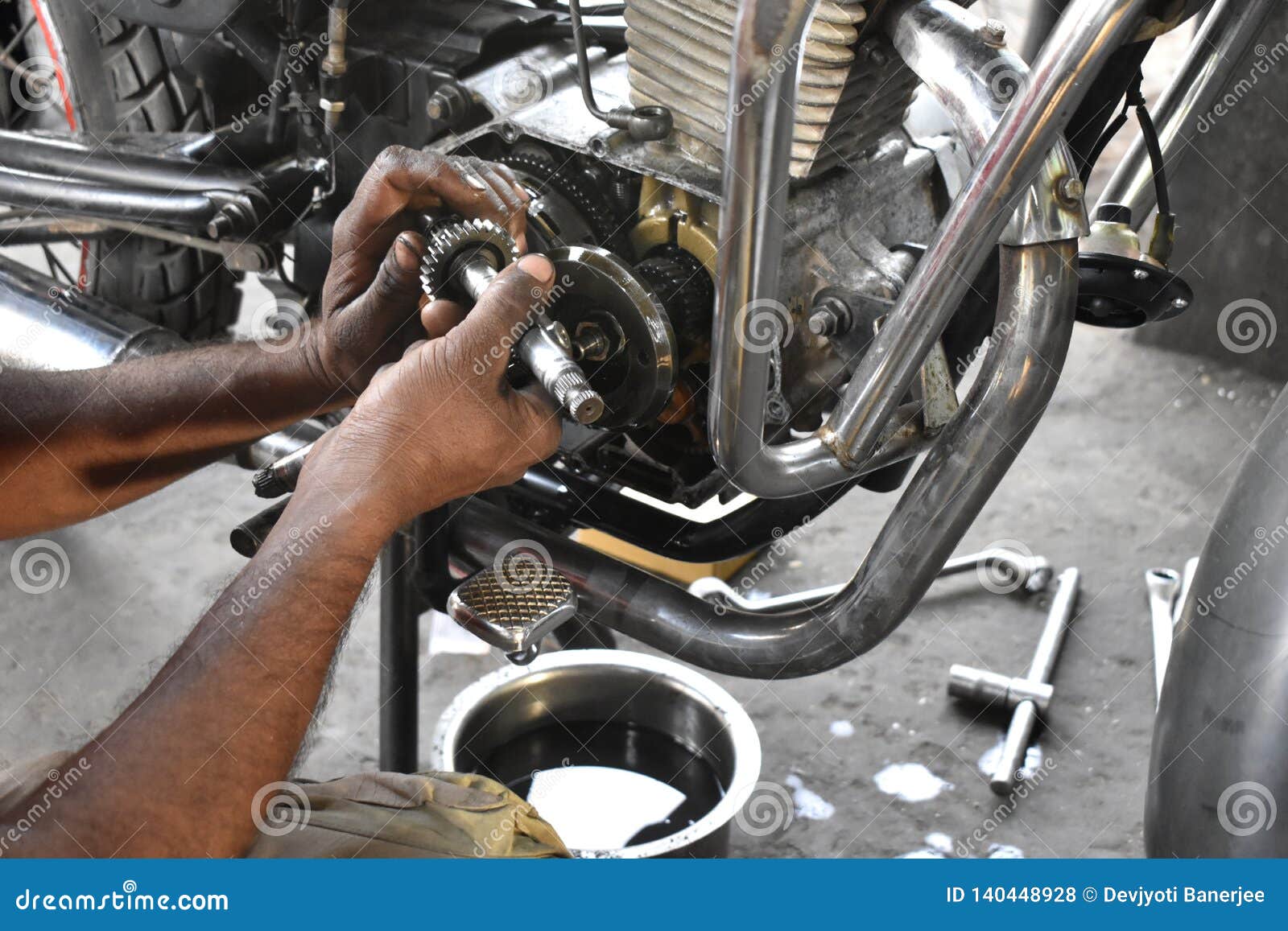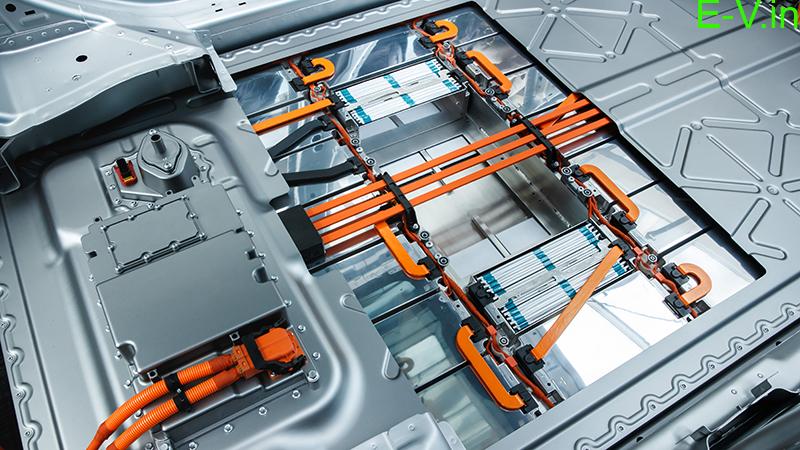What is a Bike with an Engine?
A bike with an engine, also known as a motorized bicycle or pedal-assist bike, is a two-wheeled vehicle that combines human power with an engine’s assistance. These vehicles are designed to offer a seamless blend of traditional cycling and motorized transportation. The engine, which can be electric or gas-powered, assists the rider in propelling the bike forward, making it easier to navigate hilly terrains, cover long distances, or simply commute with minimal physical effort.
Motorized bicycles have gained popularity among commuters and recreational users alike due to their eco-friendly nature, cost-effectiveness, and convenience. By utilizing an engine, these bikes reduce the rider’s physical strain, enabling them to reach their destinations faster and more efficiently than traditional bicycles. Additionally, bikes with engines often require less maintenance than motorcycles or cars, making them an attractive option for those seeking a low-maintenance mode of transportation.
Types of Bikes with Engines
Motorized bicycles, or bikes with engines, come in various forms, each with its unique features and advantages. Understanding these differences can help potential buyers make informed decisions based on their needs, preferences, and budget. The primary types of bikes with engines include:
Electric Bikes (E-bikes)
E-bikes are equipped with an electric motor and rechargeable battery, which provide pedal assistance. These bikes are ideal for commuters and recreational users who want to minimize physical effort while still enjoying the sensation of cycling. E-bikes typically offer multiple assistance levels, allowing riders to customize their experience based on terrain and desired exercise intensity.
Gas-Powered Bikes
Gas-powered bikes use a small internal combustion engine to propel the vehicle forward. These bikes are often faster and more powerful than electric bikes, making them suitable for off-road adventures or long-distance commuting. However, gas-powered bikes typically require more maintenance and may not be as eco-friendly as their electric counterparts.
Pedal-Assist Bikes
Pedal-assist bikes, also known as pedelecs, provide electric assistance only when the rider is pedaling. This feature distinguishes pedelecs from throttle-controlled e-bikes, which can be propelled without any pedaling input. Pedal-assist bikes offer a more natural cycling experience and are often preferred by riders who want to maintain a higher level of physical activity.
Converted Bikes
Converted bikes are traditional bicycles that have been retrofitted with an electric motor and battery. These bikes allow riders to maintain the appearance and feel of a standard bicycle while still enjoying the benefits of electric assistance. Conversion kits are available for various bicycle types, making it easy for riders to transform their existing bikes into motorized ones.
How to Choose the Right Bike with an Engine
Selecting the perfect bike with an engine for your needs involves careful consideration of several factors. By evaluating these aspects and conducting thorough research, you can ensure a satisfying and enjoyable riding experience. Key factors to consider include:
Budget
Establish a budget that suits your financial situation. Motorized bicycles can range from a few hundred to several thousand dollars, so it’s essential to determine how much you’re willing to invest. Keep in mind that higher-priced bikes often come with better components, warranties, and after-sales support.
Terrain and Distance
Assess the terrain and distance you’ll be covering regularly. For instance, electric bikes perform well on flat surfaces and short distances, while gas-powered bikes may be more suitable for hilly terrains and long-distance commuting. Additionally, consider whether you’ll be riding on dedicated bike paths, roads, or off-road trails.
Personal Preferences
Think about your personal preferences when it comes to riding a bike with an engine. For example, if you enjoy physical activity, a pedal-assist bike might be the best option. Conversely, if you prefer minimal effort, a throttle-controlled e-bike might be more appealing. Also, consider factors such as bike weight, frame material, and aesthetics.
Product Reviews and Manufacturer Research
Read product reviews and research manufacturers to gain insights into the performance, reliability, and customer satisfaction of various motorized bicycles. Pay attention to aspects such as battery life, motor power, and warranty coverage. Additionally, consider purchasing from reputable brands known for their quality and customer service.
Test Rides
Whenever possible, test ride a bike with an engine before making a final decision. This hands-on experience will help you gauge the bike’s comfort, handling, and overall performance, ensuring it meets your expectations and requirements.
Top Bikes with Engines on the Market
When it comes to motorized bicycles, several models stand out due to their impressive features, performance, and value. Here, we review three popular bikes with engines, comparing their pros, cons, and unique selling points to help you make an informed decision.
Espin Sport
The Espin Sport is a versatile electric bike that boasts a powerful 500-watt motor and a long-lasting 418Wh battery. With a top speed of 20 mph and a range of up to 40 miles, the Espin Sport is suitable for both urban commuting and recreational rides. Its sturdy aluminum frame, adjustable suspension, and hydraulic disc brakes ensure a comfortable and safe riding experience. However, the Espin Sport’s higher price point may be a deterrent for budget-conscious buyers.
Addmotor Motan M-150
The Addmotor Motan M-150 is a gas-powered bike that offers impressive power and speed. With a 66cc engine, this bike can reach speeds of up to 25 mph and features a 21-speed Shimano transmission for smooth gear shifting. The Motan M-150’s durable frame, front suspension, and dual disc brakes provide excellent handling and control, even on rough terrains. However, its higher maintenance requirements and noisier operation may not appeal to all riders.
Nakto City Electric Bike
The Nakto City Electric Bike is an affordable e-bike option that features a 250-watt motor and a removable 36V, 10Ah battery. With a top speed of 20 mph and a range of up to 25 miles, the Nakto City Electric Bike is ideal for short commutes and leisurely rides. Its lightweight design, rear rack, and front and rear fenders make it a practical choice for daily use. However, its lower-quality components and limited range may not satisfy more demanding riders.
When selecting a bike with an engine, consider factors such as budget, terrain, distance, and personal preferences. By carefully evaluating these aspects and conducting thorough research, you can find a motorized bicycle that meets your needs and provides a safe, enjoyable, and eco-friendly riding experience.
Benefits of Using a Bike with an Engine
Motorized bicycles, or bikes with engines, offer numerous advantages for commuters and recreational users alike. By combining human power with engine assistance, these vehicles provide a unique and eco-friendly transportation solution. Here are some key benefits of using a bike with an engine:
Reduced Carbon Emissions
Compared to traditional cars and motorcycles, bikes with engines emit significantly fewer greenhouse gases. By choosing a motorized bicycle, you can contribute to a cleaner environment and help reduce your carbon footprint.
Lower Transportation Costs
Bikes with engines typically cost less to operate and maintain than cars or motorcycles. With lower fuel costs, reduced registration fees, and lower insurance premiums, motorized bicycles can save you money in the long run.
Improved Physical Fitness
Even with engine assistance, bikes with engines still require some physical effort from the rider. By engaging in regular cycling, you can improve your cardiovascular health, build muscle strength, and enhance overall physical fitness.
Convenience for Daily Commutes
Motorized bicycles are an excellent option for daily commutes, as they can navigate traffic more efficiently than cars and offer a faster and more agile alternative to traditional bikes. Additionally, many cities provide designated bike lanes and parking spaces, making it easy to integrate motorized bicycles into your daily routine.
Versatility for Recreational Activities
Bikes with engines are suitable for various recreational activities, from leisurely rides in the park to off-road adventures. With their versatile designs and engine capabilities, motorized bicycles can accommodate a wide range of interests and preferences.
By embracing the benefits of bikes with engines, you can enjoy a more sustainable, cost-effective, and enjoyable mode of transportation. As technology continues to advance, motorized bicycles will likely play an increasingly important role in urban transportation and environmental preservation.
How to Operate and Maintain a Bike with an Engine
Properly operating and maintaining a bike with an engine is crucial for ensuring its longevity, performance, and safety. Here are some guidelines for operating and maintaining motorized bicycles, including charging or refueling, cleaning, and performing routine checks:
Charging or Refueling
For electric bikes, charge the battery according to the manufacturer’s instructions, typically after each use or when the battery level drops below a certain threshold. For gas-powered bikes, refuel the tank with the recommended fuel type and avoid overfilling. Always store fuel in a cool, well-ventilated area away from open flames or sparks.
Cleaning
Regularly clean your bike with a damp cloth and mild detergent to remove dirt, debris, and grime. Avoid using high-pressure washers, as they can damage sensitive components. Dry the bike thoroughly after cleaning to prevent rust and corrosion.
Routine Checks
Perform routine checks on your bike with an engine to ensure its optimal performance and safety. Inspect the tires for proper inflation and wear, lubricate the chain, and tighten any loose bolts or screws. Additionally, check the brakes, throttle, and lights for proper function.
Safety Precautions
When operating a bike with an engine, always wear a helmet and follow local traffic regulations. Be aware of your surroundings, use hand signals to indicate turns, and avoid distractions such as using your phone or listening to loud music.
Local Regulations
Familiarize yourself with local regulations regarding motorized bicycles, as they may vary by region. Some areas require registration, insurance, or special licenses for operating bikes with engines. Always adhere to these regulations to ensure a safe and legal riding experience.
By following these guidelines for operating and maintaining a bike with an engine, you can maximize its performance, extend its lifespan, and enjoy a safe and enjoyable riding experience.
Troubleshooting Common Issues with Bikes with Engines
Despite their many benefits, bikes with engines can occasionally encounter problems that may affect their performance and safety. Here, we address common issues and offer practical solutions and preventive measures to ensure a smooth and enjoyable riding experience.
Battery Issues
For electric bikes, battery problems can manifest as reduced range, slow charging, or complete failure. To troubleshoot, first, ensure the battery is properly charged and connected. If the issue persists, check for damaged or corroded connectors and clean or replace them as necessary. If the battery is more than a few years old, consider replacing it with a new one from the bike’s manufacturer or a reputable supplier.
Chain Maintenance
Chains on bikes with engines require regular lubrication and adjustment to prevent wear, rust, and noise. Inspect the chain for signs of damage or wear, and clean and lubricate it according to the manufacturer’s instructions. Adjust the tension if necessary, ensuring it’s tight enough for efficient power transfer but loose enough to prevent binding or excessive wear.
Engine Malfunctions
Engine problems on gas-powered bikes can include hard starting, poor performance, or complete failure. To diagnose and address these issues, first, check the fuel, spark plugs, and air filter for signs of contamination, damage, or wear. Clean or replace these components as necessary, and ensure the carburetor is properly tuned and adjusted. If the issue persists, consult a professional mechanic or the bike’s manufacturer for further assistance.
Preventive Measures
To minimize the likelihood of issues with your bike with an engine, follow these preventive measures:
- Regularly inspect and maintain the bike, including cleaning, lubricating, and adjusting components as needed.
- Store the bike in a dry, clean, and secure location, away from extreme temperatures and weather conditions.
- Use the bike according to the manufacturer’s instructions and local regulations, avoiding excessive loads, speeds, or harsh terrain.
- Follow a regular maintenance schedule, including routine checks, tune-ups, and part replacements as recommended by the manufacturer.
By understanding and addressing common issues with bikes with engines, you can ensure a safe, reliable, and enjoyable riding experience. Always consult the bike’s manual or a professional mechanic for specific guidance and assistance.
The Future of Bikes with Engines: Smart Technology, Improved Battery Life, and Lighter Materials
As the world of motorized bicycles continues to evolve, several emerging trends and advancements are poised to reshape the industry, offering enhanced performance, convenience, and sustainability. Here, we discuss the future of bikes with engines, focusing on smart technology integration, improved battery life, and lighter materials.
Smart Technology Integration
The integration of smart technology in bikes with engines is becoming increasingly prevalent, with features such as GPS tracking, mobile app integration, and advanced diagnostics. These innovations enable riders to monitor their bike’s performance, navigate more efficiently, and troubleshoot issues remotely. Furthermore, smart technology can enhance safety by incorporating features such as collision avoidance systems, lane departure warnings, and adaptive headlights.
Improved Battery Life
Advancements in battery technology are leading to increased range and faster charging times for electric bikes. Newer battery chemistries, such as lithium-nickel-manganese-cobalt-oxide (LiNiMnCoO2) and lithium-iron-phosphate (LiFePO4), offer higher energy densities, longer lifespans, and improved safety compared to traditional lead-acid or nickel-cadmium batteries. As a result, bikes with engines can now travel further on a single charge, making them more practical for daily commuting and long-distance touring.
Lighter Materials
The development of advanced materials, such as carbon fiber, titanium, and high-strength aluminum alloys, is enabling manufacturers to produce lighter and more durable bikes with engines. These materials not only reduce the overall weight of the bike, improving handling and maneuverability, but also contribute to better energy efficiency, as less power is required to propel the bike forward. Additionally, lighter materials can help lower transportation costs and reduce the environmental impact associated with manufacturing and disposal.
Impact on Urban Transportation and the Environment
The ongoing advancements in motorized bicycles have the potential to significantly impact urban transportation and the environment. By offering a cleaner, more cost-effective, and space-efficient alternative to traditional cars and motorcycles, bikes with engines can help reduce traffic congestion, lower carbon emissions, and promote healthier, more active lifestyles. Furthermore, the integration of smart technology and improved safety features can make motorized bicycles more accessible and appealing to a broader range of users, further accelerating their adoption in urban environments.
As the field of motorized bicycles continues to evolve, riders can look forward to a future characterized by enhanced performance, convenience, and sustainability. By staying informed about emerging trends and advancements, riders can make more informed decisions and fully leverage the potential of bikes with engines to transform urban transportation and contribute to a greener, healthier planet.







